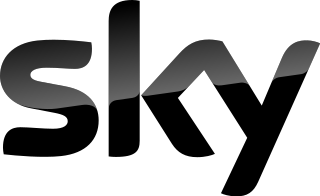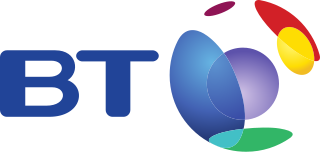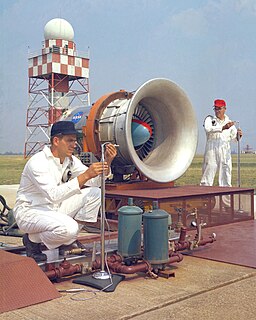Rate adaptation and BT Wholesale's 'Dynamic Line Management' (DLM)
During the first ten days after the service was provided, the line's performance was monitored and the lowest connection speed is noted. This figure was used from then on to define minimum service standards below which the service can be considered to have a fault. Both during this period and afterwards a system known as dynamic line management (DLM) constantly assessed the performance of the line in order to provide information to the end user's DSL modem to allow it to choose a suitable sync rate with which to connect to the DSLAM, balancing speed against the risk of errors due to changing noise conditions. DLM could make adjustments to the DSLAM output power, suggested target signal-to-noise-ratio (SNR) margin and sync rate and could choose to apply a technique known as interleaving which aids error correction. Several factors dictate the sync rate, which limits the maximum attainable speed, such as the presence of noise within the frequency spectrum used by ADSL, but chiefly it is the distance from the telephone exchange which had the largest influence on the line's performance.
Software within the BT Wholesale network limited the rate at which inbound IP packets were delivered to the user, this rate being based on a parameter termed the IP Profile. The IP profile mechanism imposed an upper limit on the rate at which data destined for the user is transmitted. This rate restriction was imposed at the point where inbound data entered the BT Wholesale IP network from the Internet. The rate is chosen so that throughput can not exceed the throughput of the ADSL link. The IP Profile set by DLM may unfortunately be set to a figure that is somewhat below that which the DSL modem could support, which will limit the maximum inbound data delivery rate over the ADSL link to be below the maximum achievable rate.
The Internet Protocol (IP) is the principal communications protocol in the Internet protocol suite for relaying datagrams across network boundaries. Its routing function enables internetworking, and essentially establishes the Internet.
The IP profile changes over time, and is derived from a consideration of the worst downstream sync rate used by the DSL modem during some recent period of time. If circumstances cause a drop in sync rate, the IP profile decreases immediately. If conditions later improve, the IP profile will only increase after a certain delay time. The time taken for this increase to occur depends on a number of factors and can be between 75 minutes and several days. As frequent disconnections may be misinterpreted as connection problems, it is recommended that modems are left connected while not in use, in order to avoid unnecessary decreases in the IP profile. [2]
IP Profile values were chosen from a certain fixed list of rate values taken from a table and were determined by the downstream sync rate of the ADSL connection. Many sync rate values will correspond to the same IP Profile figure. It is often the case that a user's downstream sync rate, when overheads are accounted for, equates to a true maximum inbound throughput figure that falls between two permitted IP Profile levels and, in such a case, the lower level is used. As an example, if the downstream sync rate of a DSL modem is set to 1984 kbit/s, the associated IP Profile is 1500 kbit/s so the maximum permitted inbound data rate is 1500 kbit/s, but if the sync rate were to rise to 2016 kbit/s the IP Profile would be 1750 kbit/s.
Digital subscriber line is a family of technologies that are used to transmit digital data over telephone lines. In telecommunications marketing, the term DSL is widely understood to mean asymmetric digital subscriber line (ADSL), the most commonly installed DSL technology, for Internet access.

A digital subscriber line access multiplexer is a network device, often located in telephone exchanges, that connects multiple customer digital subscriber line (DSL) interfaces to a high-speed digital communications channel using multiplexing techniques.

In a telecommunications network or computer network, downstream refers to data sent from a network service provider to a customer.
A leased line is a private bidirectional or symmetric telecommunications circuit between two or more locations provided according to a commercial contract. It is sometimes also known as a private circuit, and as a data line in the UK.
ANSI T1.413 is a technical standard that defines the requirements for the single asymmetric digital subscriber line (ADSL) for the interface between the telecommunications network and the customer installation in terms of their interaction and electrical characteristics. ADSL allows the provision of voiceband services including plain old telephone service (POTS) and data services up to 56 kbit/s, and a variety of digital channels. In the direction from the network to the customer premises (downstream), the digital bearer channels may consist of full-duplex low-speed bearer channels and simpler high-speed bearer channels; in the other (upstream) direction, only low-speed bearer channels are provided.
Datastream is a type of broadband network connection in the United Kingdom. Datastream is a wholesale product in which the wholesale customer can purchase connectivity between their own point of presence and a number of end users. Some authors use the term "datastream" for replacing the term dataflow to avoid confusion with dataflow computing or dataflow architecture, based on an indeterministic machine paradigm.
A naked DSL, also known as standalone or dry loop DSL) is a digital subscriber line (DSL) without a PSTN service — or the associated dial tone. In other words, only a standalone DSL Internet service is provided on the local loop.
ITU G.992.5 is an International Telecommunication Union standard for asymmetric digital subscriber line (ADSL) broadband Internet access. The standard has a maximum theoretical download speed of 24 Mbit/s. Utilizing G.992.5 Annex M upload speeds of 3.3 Mbit/s can be achieved.
The 21st Century Network (21CN) programme is the data and voice network transformation project, under way since 2004, of the UK telecommunications company BT Group plc. It was intended to move BT's telephone network from the AXE/System X Public Switched Telephone Network (PSTN) to an Internet Protocol (IP) system. As well as switching over the PSTN, BT planned to deliver many additional services over their new data network, such as on-demand interactive TV services.
In telecommunications, ITU G.992.2 is an ITU standard for ADSL using discrete multitone modulation. G.lite does not strictly require the use of DSL filters, but like all variants of ADSL generally functions better with splitters.

ITU G.992.3 is an ITU standard, also referred to as ADSL2 or G.dmt.bis. It optionally extends the capability of basic ADSL in data rates to 12 Mbit/s downstream and, depending on Annex version, up to 3.5 Mbit/s upstream. ADSL2 uses the same bandwidth as ADSL but achieves higher throughput via improved modulation techniques. Actual speeds may decrease depending on line quality; usually the most significant factor in line quality is the distance from the DSLAM to the customer's equipment.

Be Unlimited was an Internet service provider in the United Kingdom between 2004 and 2014. Initially founded as an independent company by Boris Ivanovic and Dana Tobak in 2005, it was bought by Spanish group Telefónica Europe in 2006 before being sold on to BSkyB in March 2013 in an agreement which saw BSkyB buy the fixed telephone line and broadband business of Telefónica Europe which at the time traded under the O2 and BE brands. The deal saw BSkyB agree to pay £180 million initially, followed by a further £20 million after all customers had been transferred to Sky's existing business. The sale was subject to regulatory approval in April 2013, and was subsequently approved by the Office of Fair Trading on 16 May 2013.
In telecommunications, cable Internet access, shortened to cable Internet, is a form of broadband Internet access which uses the same infrastructure as a cable television. Like digital subscriber line and fiber to the premises services, cable Internet access provides network edge connectivity from the Internet service provider to an end user. It is integrated into the cable television infrastructure analogously to DSL which uses the existing telephone network. Cable TV networks and telecommunications networks are the two predominant forms of residential Internet access. Recently, both have seen increased competition from fiber deployments, wireless, and mobile networks.
The 1-Meg Modem in telecommunications was a DSL modem created by Nortel which conforms to the ADSL Lite standard. The 1-Meg Modem was the first xDSL modem to gain approval and registration under FCC Part 68 Rules.

Sky Broadband is broadband service offered by Sky UK in the United Kingdom. With the introduction of Sky Fibre, Sky Broadband now refers to ADSL broadband products.
BT Wholesale and Ventures is a division of United Kingdom telecommunications company BT Group that provides voice, broadband, data, hosted communication, managed network and IT services to communications providers (CPs) in Great Britain, including BT's other divisions: BT Consumer, BT Business and Public Sector and EE. They also offer services for media companies and broadcasters, and its ventures side offers a range of products and services. It provides the voice services to UK customers via 999, 118 500 and Next Generation Text Service, which helps those who can’t hear or speak on the phone. The division is also leading the BT thinking on the internet of things.
Bit-stream access refers to the situation where a wireline incumbent installs a high-speed access link to the customer's premises and then makes this access link available to third parties, to enable them to provide high speed services to customers. This type of access does not entail any third-party access to the copper pair in the local loop.

The United Kingdom has been involved with the Internet since it was created. The telecommunications infrastructure provides Internet access to businesses and home users in various forms, including cable, DSL, and wireless. The Internet country code top-level domain (ccTLD) for the United Kingdom is .uk and is sponsored by Nominet.

Asymmetric digital subscriber line (ADSL) is a type of digital subscriber line (DSL) technology, a data communications technology that enables faster data transmission over copper telephone lines than a conventional voiceband modem can provide. ADSL differs from the less common symmetric digital subscriber line (SDSL). In ADSL, bandwidth and bit rate are said to be asymmetric, meaning greater toward the customer premises (downstream) than the reverse (upstream). Providers usually market ADSL as a service for consumers for Internet access for primarily downloading content from the Internet, but not serving content accessed by others.











